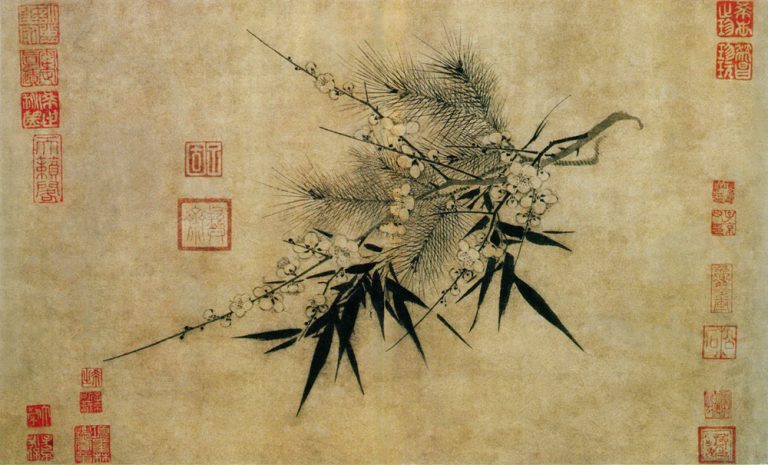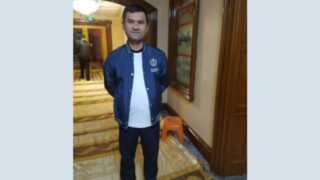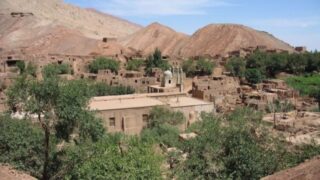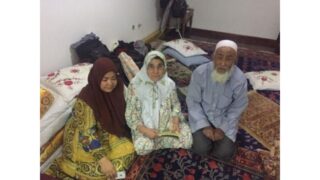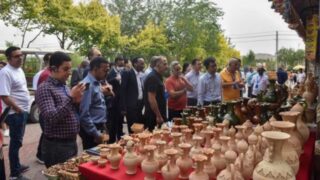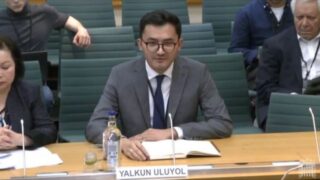A secret plan to hide the detained Uyghurs in innocuous facilities backfires, exposing Xinjiang’s insatiable demand for more prison-like detention space.
Xinjiang Uyghur Autonomous Region authorities started building transformation through education camps in 2014 to detain and “reform” ethnic Uyghur Muslims. When Chen Quanguo became Party Secretary of Xinjiang in 2016, camp building and re-education activities accelerated. Starting in 2017, many large industrial bases, Party schools, hospitals, and educational buildings in Xinjiang have been converted into camps.
It appears the government wanted to hide the scale of its mass detention and re-education. A few examples help to shed light on the practice.


Huocheng County Garment and Apparel Industrial Park was built in 2015 on Chaoyang South Road on the extreme western border of China. The factory complex covers an area of roughly 323,000 square feet (about 30,000 square meters). The industrial park contained production and training workshops for textiles, electrical welding, clothing, knitting, and related products. The complex employed more than 2,000 workers. But this large scale and modern facility only served an industrial purpose for two years.
The walls surrounding Huocheng County Garment and Apparel Industrial Park in Xinjiang are concealed by large propaganda signboards, with surveillance cameras on top of the walls:
Today, a protective fence stands in front of the industrial park’s entrance. It is surrounded by walls about 13 feet (four meters) high, with surveillance cameras mounted on top of the walls every 33 feet (ten meters).


Sources tell Bitter Winter that in October 2017, the local government converted this industrial facility into a transformation through education camp for detaining Uyghurs. By November of that year, more than 3,000 people were detained there. In September 2018, the number of detainees surpassed 6,000. Among those, more than 700 were from two local brigades in the county’s Huiyuan town (a brigade is a village-level administrative unit in Xinjiang).
A member of the staff of the camp reports, “Every person who is detained here has ideological problems, so we provide them with patriotic education. The first step is to learn Mandarin and be able to know 3,000 Chinese characters. The second step is to study the law. The third step is to learn skills. There is no freedom here. Every aspect of their daily routine (literally ‘eating, drinking, and using toilet’) is done under our surveillance.”


Hospitals – generally a place to save lives and treat injuries – have been used to house political prisoners as well. For example, Xinhua Hospital was built in 1991 and was one of the first hospitals in Yining city. The facility is large: the main wing of the hospital has four floors, with about 34 wards on each floor, and four beds per ward. A second building, which provided care to high-ranking party officials, has 12 floors, 24 rooms on each floor, with two beds per room. These 1,000-plus beds can now detain over 2,500 people.
The exterior of Xinhua Hospital in Yining city:
Sources tell Bitter Winter that the local government had planned to update and repurpose the 26-year-old general hospital to become Yili Prefecture Children’s Hospital in the first half of 2017. Unexpectedly, though, security services claimed it for a transformation through education camp instead.
Today, on the right side of the hospital entrance, a new police booth has been built. A sign reading “Public Security” hangs from it, and “Exit” and “Entrance” signs have been added on either side of the gate. Upon entering, there is a security system for checking bags. Every person who enters must pass through a security process that includes facial recognition and ID card identification.


Bitter Winter has reported previously on such conversions of existing buildings into “transformation through education” camps, and such conversions exist throughout Xinjiang. The evidence suggests that the CCP intended to deceive the public by hiding re-education camps inside “normal” community buildings. However, as more and more “hidden” camps in Xinjiang are exposed, they only serve as evidence of the authorities’ trampling on human rights, and their ever-increasing need to find more space to detain Uyghur Muslims.
Reported by Li Zaili
